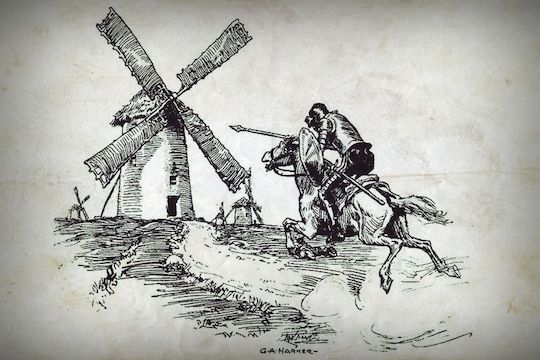The unbridled giants, with long arms, some of them almost two leagues long, with whom Don Quixote wanted to fight a duel, referring to the windmills, were in charge of grinding or pressing. This was thanks to the drive of the blades, which were turned by the wind, which moved the molar stone.
Despite the fact that there are different types of windmills, most people only think they were used for grinding cereal grains, but there are some places where this device was and is used to grind olives today. The stones are moved not only with the help of mules and donkeys, but also with the help of the movement of the blades activated by the force of the wind.
In Italian Tuscany, on the route that connects Cerfignano to Otranto, there is a wind-powered oil mill outside the center. It was built in 1688 under the mill; the olives were crushed thanks to the force of the wind that activated the operation of the conical stones.
Another example, which is still in use today, is the Lottero Estate. It is located on the top of the Montefiesole hill near Florence, where the ancient artisan methods of olive growing and olive oil production are still preserved, combined with the most modern techniques that together produce one of the best oils of the Frantoio variety in Florence. It is made in an olive oil mill surrounded by a succession of hills covered with olive groves and vineyards, whose key to success is the Tuscan wind.
On the Japanese island of Shodoshima, which is called the island of olive trees, there are also two of these types of mills.
What if, if in that place of La Mancha whose name I do not want to remember, the Ingenious Hidalgo had come across wind-powered olive oil mills producing Manchego EVOO? Maybe it was in these wind-powered mills where he got the Aparicio olive oil, the same oil that helped him heal his wounds. EVOO, literature, tradition and craftsmanship will forever live on through the centuries.

